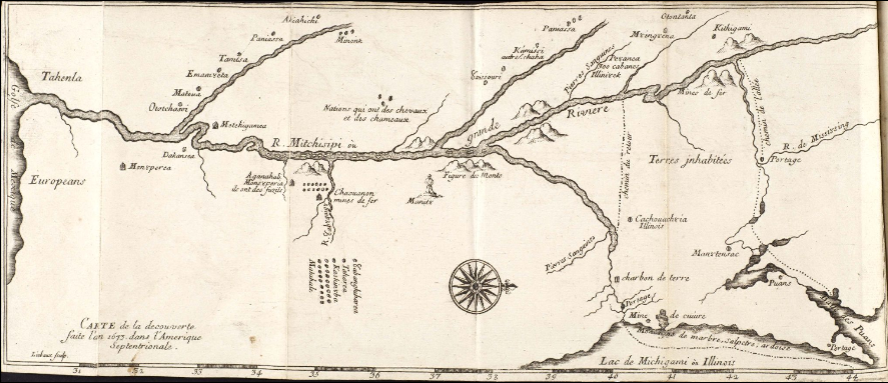bloc_article_content
From the St. Lawrence Valley to the Great Plains (17th-18th C.)
Voyages of exploration and their attendant colonial objectives resumed under Henri IV, whose reign (1589-1610) marked the return of civil and religious peace.
In the early 17th century, Pierre Du Gua de Monts (1558-1628), the principal beneficiary of French commercial monopoly between 1603 and 1609, and Samuel de Champlain (ca. 1580-1635), an observer and then an expedition leader, were the driving forces behing the exploration of Canada, from the coast of Acadia (Nova Scotia) to the Great Lakes. In 1603 an expedition seeking trade and new discoveries traveled up the Saint. Lawrence River to Hochelaga (Montreal). From 1604 to 1607, Du Gua de Monts systematically explored the coasts of Acadia and New England, all way to Cape Cod, in search of a promising site for colonial settlement. After founding Quebec in 1608, Champlain traveled north on the Saguenay River, south on the Richelieu River (1609), and west on the Ottawa River as far as Lake Huron (1613, 1615-16).
Expeditions in the following decades concentrated on the Great Lakes region and, unlike earlier explorations, were rarely government sponsored. The principal actors were missionaries who hoped to evangelize Indigenous peoples. After the destruction of the Wendat confederacy and its trade networks (c.1650), coureurs de bois (illegal traders) began to venture into the Pays d’en Haut (Great Lakes region) in search of the furs necessary to the survival of New France. It was only after 1663 that colonial authorities resumed planning and directing expeditions and collecting the resulting reports, journals, and maps.
Despite the reticence of Louis XIV (r. 1643-1715) and Jean-Baptiste Colbert, his First Minister of State, the colony's Intendant Jean Talon (and later Governor Frontenac) encouraged exploration, urging their agents to claim the lands they encountered in the name of the king. To the traditional objectives of developing trade posts, searching for mineral deposits, and finding a route to Asia, a new consideration was added: the need to block British expansion and influence in the continental interior. This rivalry explains the Franco-British conflict over Hudson Bay, whose premium fur trading post had been bankrolled by an English company at the initiative of two French coureurs de bois, Médard Chouart des Groseilliers (1618-1696) and Pierre-Esprit Radisson (c.1636-c.1710).
Published in may 2021











